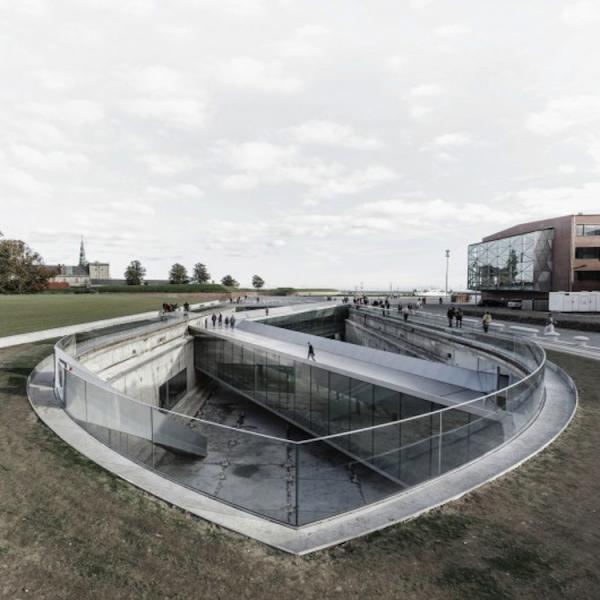The five finalists for the 2015 European Union Prize for Contemporary Architecture, or the Mies van der Rohe award. The finalists were chosen from a shortlist of 40 projects and include a sunken museum and a crystalline concert hall.
Considered to be some of the best works completed by European architects in the previous two years, the projects are in the running for a prize of more than $65,000.
The five finalists for the Mies van der Rohe award are:
- Philharmonic Hall Szczecin designed by Estudio Barozzi Veiga in Szczecin, Poland
- The Saw Swee Hock Student Centre by O'Donnell + Tuomey at the London School of Economics in London
- Ravensburg Art Museum designed by Lederer Ragnarsdóttir Oei in Ravensburg, Germany
- Danish Maritime Museum designed by Bjarke Ingels Group in Helsingør, Denmark
- Antinori Winter by Archea Associati in San Casciano Val di Pesa, Florence, Italy
The architects will present their projects to the jury on May 7.
 Philharmonic Hall Szczecin designed by Estudio Barozzi Veiga in Szczecin, Poland. Photo by Simon Menges
Philharmonic Hall Szczecin designed by Estudio Barozzi Veiga in Szczecin, Poland. Photo by Simon Menges
 The Saw Swee Hock Student Centre by O'Donnell + Tuomey at the London School of Economics in London. Photo by Alex Bland
The Saw Swee Hock Student Centre by O'Donnell + Tuomey at the London School of Economics in London. Photo by Alex Bland
 Ravensburg Art Museum designed by Lederer Ragnarsdóttir Oei in Ravensburg, Germany. Photo by Roland Halbe
Ravensburg Art Museum designed by Lederer Ragnarsdóttir Oei in Ravensburg, Germany. Photo by Roland Halbe
 Danish Maritime Museum desinged by Bjarke Ingels Group in Helsingør, Denmark. Photo by Rasmus Hjortshoj
Danish Maritime Museum desinged by Bjarke Ingels Group in Helsingør, Denmark. Photo by Rasmus Hjortshoj
 Antinori Winter by Archea Associati in San Casciano Val di Pesa, Florence, Italy. Photo by Pietro Savorelli
Antinori Winter by Archea Associati in San Casciano Val di Pesa, Florence, Italy. Photo by Pietro Savorelli
Related Stories
| Feb 2, 2012
Fire rated glazing helps historic university preserve its past
When the University embarked on its first major addition since the opening of Hutchins Hall in 1933, preserving the Collegiate Gothic-style architecture was of utmost importance.
| Feb 2, 2012
Delk joins Gilbane Building Co.
Delk to focus on healthcare construction programs and highly complex higher education facilities for Gilbane Building Company’s Southwest region.
| Feb 2, 2012
Next phase of construction begins on Scripps Prebys Cardiovascular Institute
$456 million Institute will be comprehensive heart center for 21st Century.
| Feb 1, 2012
Increase notched in construction jobs, but unemployment rate still at 16%
AGC officials said that construction employment likely benefited from unseasonably warm weather across much of the country that extended the building season.
| Feb 1, 2012
Replacement windows eliminate weak link in the building envelope
Replacement or retrofit can help keep energy costs from going out the window.
| Feb 1, 2012
‘Augmented reality’ comes to the job site
A new software tool derived from virtual reality is helping Building Teams use the power of BIM models more effectively.
| Feb 1, 2012
New ways to work with wood
New products like cross-laminated timber are spurring interest in wood as a structural material.
| Feb 1, 2012
Blackney Hayes designs school for students with learning differences
The 63,500 sf building allows AIM to consolidate its previous two locations under one roof, with room to expand in the future.
| Feb 1, 2012
Two new research buildings dedicated at the University of South Carolina
The two buildings add 208,000 square feet of collaborative research space to the campus.
| Feb 1, 2012
List of Top 10 States for LEED Green Buildings released?
USGBC releases list of top U.S. states for LEED-certified projects in 2011.

















